Joy. It’s an overused, often misused, sometimes derided word and yet this world of ours has never needed it more. With that in mind, here’s a bite-sized list of things to sow and/or grow this year that are absolutely guaranteed to bring some of it into your life and that of others.
Some of the plants listed below are by their nature short-lived annuals, the fireworks of the summer garden that briefly illuminate our world in wonderful ways. For example, sweet pea, a hardy annual guaranteed to provide a lightning bolt of fleeting beauty and perfume that will be remembered long after its flowers have faded. Or giant sunflowers stretching their glowing, saucer-sized flowers towards the sky.
Others are long-term investments in the future, ones destined to become plants so exquisite in bloom that they’ll make anyone who sees them catch their breath with the kind of admiration that verges on reverence. If you’ve ever been suddenly stopped in your tracks by the sight of a cherry tree in full spring blossom, or left in awe by the beauty of a magnolia spilling its giant cream-pink petals on to the ground, or snuck into an abandoned garden to quietly pilfer a stem or two of lilac in bloom, then you’ll know what I mean.
Other plants give us joy through the simple act of eating them or arranging them in a vase. A bowlful of fragrant home-grown tomatoes just picked from a glasshouse. A vaseful of tissue-soft dahlias glowing with colour. Or fresh garden herbs packed full of flavour and scent. In a world starved of magic these plants are spellbinding, reminding us in the most life-affirming and joyful way that we’re just one species among many.
RM Block
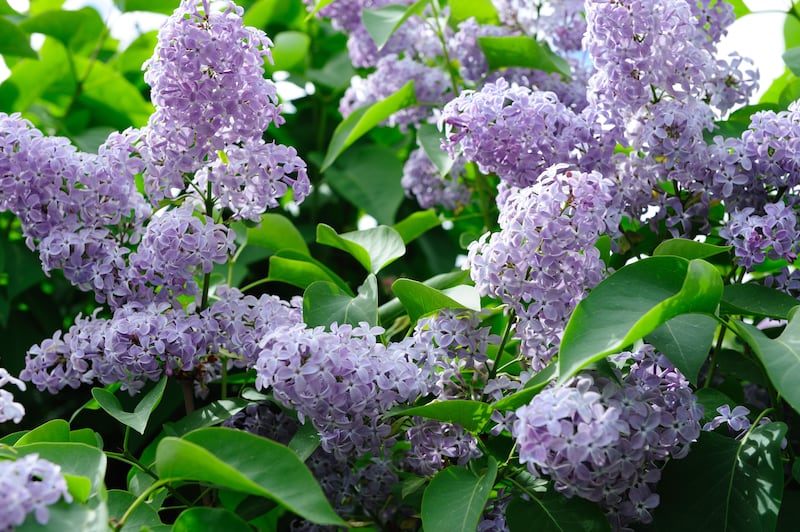
Tomato “Sungold”: Even the name of this wonderfully tasty, supremely productive variety of cherry tomato is cheery. One of the earliest varieties to crop (you should be able to start picking its succulent golden fruit in July), the organic gardener, author and seed supplier Klaus Laitenberger of greenvegetableseeds.com reckons that just one plant will produce an average of 400 golden tomatoes over the course of its short life. Sow seed this month with generous heat (minimum 21 degrees) under cover for transplanting into a polytunnel, glasshouse or conservatory or bright porch, either in the ground or in a large pot or growbag. To ensure a steady supply of those delicious fruits, support the stems and keep plants regularly sideshooted, fed and watered.
[ Your gardening questions answered: Will my acer tree come back?Opens in new window ]

Sunflower (Helianthus annuus): If ever there was a plant that demands to be grown purely for the sheer extravagant joy of it all, it’s this heat-loving giant annual. Famed for its giant disc-shaped flowers and Jack and the Beanstalk ability to rapidly reach a height of anything up to 30 feet, sunflowers bring out the inner child in even the most curmudgeonly of adults. For maximum height, grow a variety like Helianthus “Mongolian Giant”. For something different, try the red-flowered Helianthus “Pro-Cut Red”, a reliable performer even in a cool Irish summer. Sow seed in March/April with gentle heat and under cover into individual small pots for transplanting outdoors in late spring, making sure to protect against slug damage. Sunflowers like fertile, moist but free-draining soil and a warm, sheltered spot. Recommended seed suppliers include seedaholic.com.
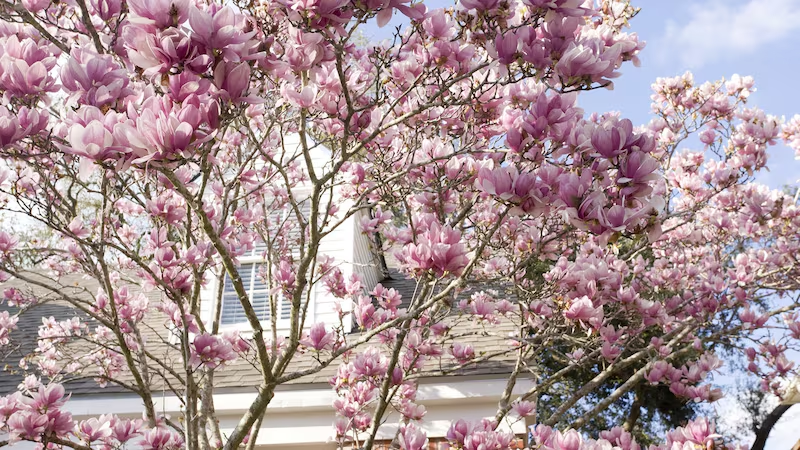
A spring-flowering tree or shrub: From varieties of magnolia, camellia and amelanchier to Japanese apricot, plum, cherry and lilac, these hugely decorative, long-lived hardy shrubs and/or trees are a glorious sight in full frothy bloom. Just make sure to choose a variety that suits your garden in terms of its size and soil type. For smaller gardens, for example, seek out the pink-flowering cherry, Prunus incisa “Kojo-no-mai”, a naturally compact, slow-growing tree that will also happily take hard pruning. Other great choices for small spaces include the Japanese apricot, Prunus “Mume Beni Chidori”; the ultra-versatile Amelanchier lamarckii; and varieties of the naturally compact Korean lilac (Syringa sprengeri). Very slow growing camellias can also be kept in a large pot for many years so long as they’re given an ericaceous compost and kept well-watered and fed. For larger gardens, the range is huge and includes the white-flowering cherry known as Prunus “Tai-Haku”; and the Shogetsu Cherry (Prunus “Shogetsu”), known for its pink-white double flowers and gently spreading habit. If yours is a sheltered garden with a moist, acidic soil, make room for at least one magnolia (for something different, seek out the rare yellow-flowered Magnolia “Honey Tulip”). Available from good Irish garden centres or from online specialist suppliers such as futureforests.ie and mrmiddleton.com, all these ornamental shrubs/trees can be planted this month but keep them well watered during their first year.
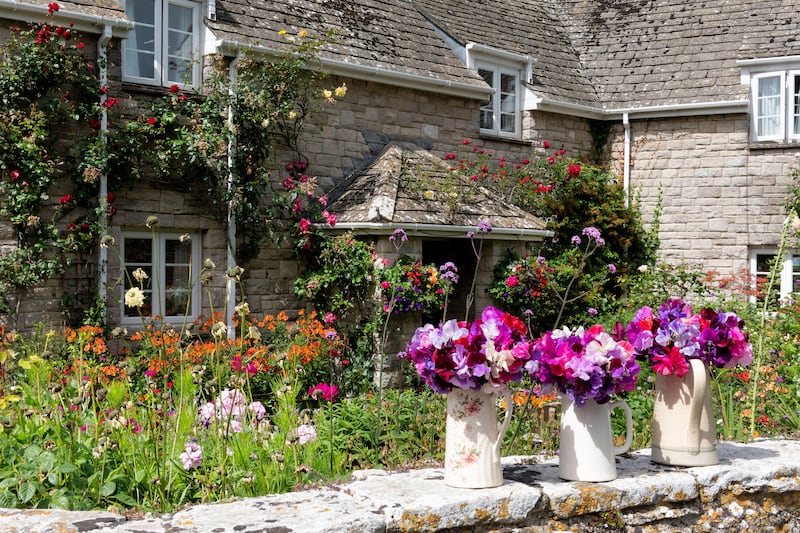
Sweet pea: I can’t think of any other plant that flowers as quickly or as profusely from spring-sowed seed as sweet pea. Its delicate, deeply scented flowers come in a multitude of different colours from the refined cream and lavender picotee flowers of Lathyrus “High Scent” to the brilliant crimson of Lathyrus “Prince Edward of York” and the purple-magenta of the intensely perfumed Lathyrus “Cupani”. For strong, productive plants in flower by early July, sow seed as soon as possible, pre-chitting it first by sandwiching it between layers of damp kitchen paper and placing it in a small, clean, airtight container in a cool room. Once sprouted, sow shallowly into individual pots or root trainers, water well and place outdoors in a sheltered spot to grow on. Get young plants in the ground as soon as they’ve developed good root systems, making sure to give them fertile soil and a sheltered position in full sun and to keep them well-watered. Recommended seed suppliers include seedaholic.com and mrmiddleton.com.
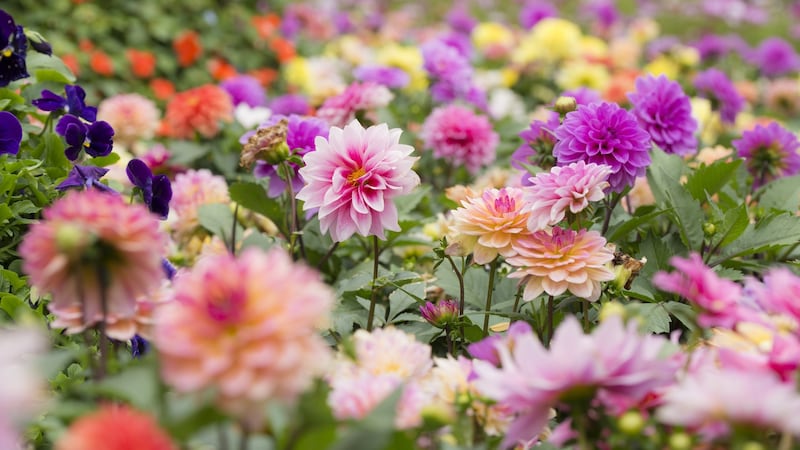
Dahlias: I’d hate to think of a world without dahlias, the vast genus of tuberous late-summer-flowering perennials whose jaw-droppingly beautiful, edible flowers epitomise everything that’s joyful about gardening. If you’ve never grown them before, make it your business to source some fleshy tubers in the coming weeks. Briefly soak these in tepid water, then pot them up and place somewhere frost-free and sheltered. A polytunnel, glasshouse, conservatory or sunny porch is ideal but failing that, put the pots into a few large clear plastic boxes with the lid on at night covered by a blanket of horticultural fleece when/if it gets chilly. The tubers should start to produce shoots within two-three weeks. Plant outdoors after all risk of frost has passed into fertile, free-draining soil and a sheltered spot in full sun, taking careful precautions against slugs while plants are young. Tubers are available at this time of year from good garden centres as well as online suppliers including mrmiddleton.com, peternyssen.com and famflowerfarm.eu

Potatoes: Nothing beat the taste of home-grown potatoes eaten with a sprinkle of salt and a generous nugget of melting Irish butter. If you’re a traditionalist who loves a floury, flavoursome spud, then ‘British Queen’ (available from mrmiddleton.com) is the classic one to grow but bear in mind that this early-cropping heritage variety is vulnerable to blight, unlike modern varieties that have been bred specifically for their blight resistance such as ‘Connect’; ‘Carolus’; ‘Vitabella’ and ‘Alouette’ (all available to order from fruihillfarm.com). Myself, I can’t resist a waxy salad potato like ‘Charlotte’, an early variety that’s mouth-waveringly delicious (available from quickcrop.ie). Early and maincrop varieties of potato should be planted from mid-March until late April, 10-15cm deep and 30cm-50cm apart into fertile, weed-free, moist but free-draining soil in full sun. Alternatively, grow them in a large pot or grow-bag. Early varieties crop more quickly than maincrop varieties (10-14 weeks in comparison to 18-22 weeks) but do not store well. But given how delicious they are, that’s rarely an issue in our house.
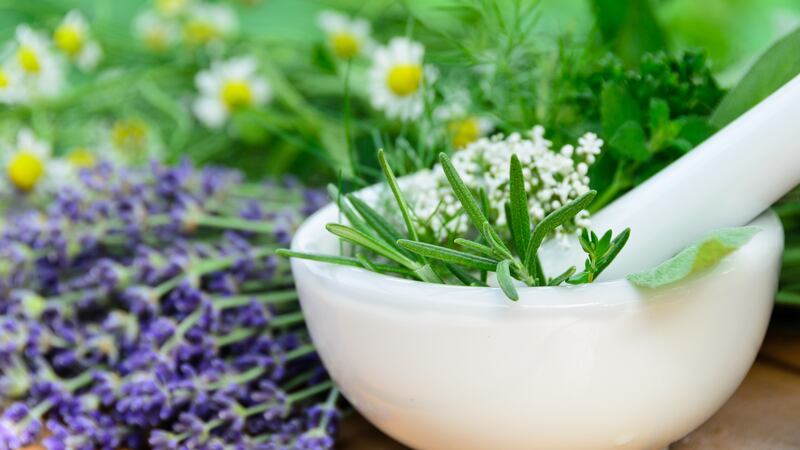
Fresh herbs: Rosemary, thyme, coriander, mint, basil, chervil, dill, fennel, parsley, oregano, chives ... just think of the range of glorious, complex flavours and scents contained within their leaves as well as their many health-affirming qualities. For ease of cultivation, these culinary herbs can be roughly divided into sun-lovers that need a warm, sheltered, free-draining spot (rosemary, fennel, thyme, dill) and those happiest in dappled shade and cooler growing conditions (parsley, chervil, coriander, oregano, mint, chives). Almost all are suitable for container growing. Short-lived kinds such as basil, dill, parsley and coriander are relatively easy and cheap to raise from seed sowed under cover at this time of year but mint, rosemary, fennel, thyme, chives and oregano are all long-lived perennials or shrubby species that are best bought as young plants.
This week in the garden
- Sort through old seed packets to check their ‘best by dates’. Any that are well out of date are likely to give poor germination rates so it’s important to take this into account if you decide to use them.
- Prepare the ground in readiness for planting seed potatoes by digging beds over, removing weeds and then working some well-rotted manure or home-made garden compost into the soil, along with a few handfuls of a general slow-release organic fertiliser.
Dates for your diary:
- Tuesday March 21st (7pm), Kilkenny Castle, ‘The Greedy Gardener: How to Have Colour at Every Season’, a talk by Rose Maye on behalf of OPW as part of its annual free series of gardening talks, see kilkennycastle.ie
- Sunday 26th March (10am-4pm), Killrudddery House & Gardens, Bray, County Wicklow, ‘Plan & Propagate Your Own Edible Flower garden’, a one-day workshop with the writer, horticulturalist and former Guardian columnist Alys Fowler, €165 includes lunch and refreshments, see killruddery.ie




















